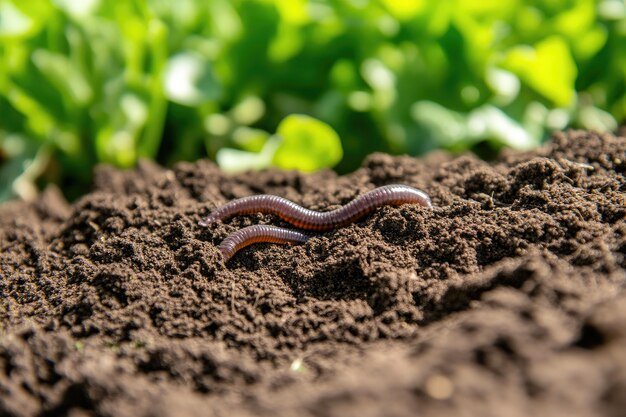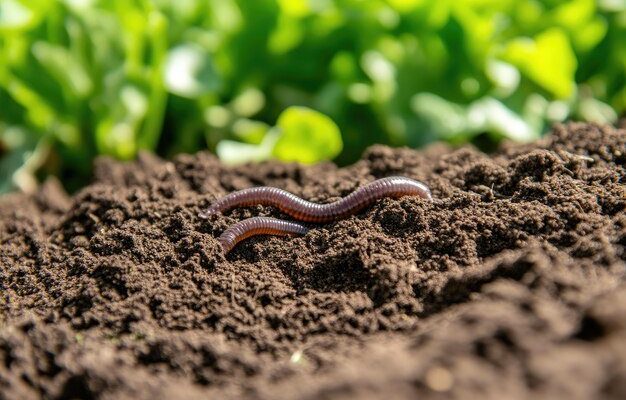
Imagine sitting in a coffee shop, chatting about how your garden is doing. You might mention that you’ve noticed fewer flowers lately or that the soil seems clumpy. With soil logs, you can track earthworm activity and figure out if it’s affecting your plants. By keeping tabs on these squiggly guys, you’re not just being curious; you’re actually improving your gardening game.
Got a brand like SoilSense in mind for monitoring? Great choice! With products designed to help you log and analyze soil data, unraveling the secrets of your garden has never been easier.
Understanding Soil Logs
Soil logs are essentially records of earthworm activity and other soil parameters over time. Think of them as a journal where you note down everything that happens in the soil. They help you establish a timeline of events, like when the worms are most active or how they react to different weather changes.
You might be wondering why you should bother with logs. Well, just like how we keep track of our health through regular check-ups, soil logs help monitor the health of your garden. They can reveal patterns and tell you when to take action. For instance, if you notice a decline in worm activity, it might be time to check if the soil is too dry or if there’s a problem with nutrients.
To get started, you’ll need to gather some basic information to include in your logs. This can range from temperature to moisture levels, and of course, the number of earthworms you observe.
Choosing the Right Tools for Monitoring
When it comes to monitoring earthworm activity, the right tools make all the difference. You might consider using soil loggers that offer features like real-time data tracking. Devices from brands like SoilSense are designed to sync wirelessly, allowing you to effortlessly record and analyze your findings.
Here are a few essential items you might need:
- Soil Log Software: Some tools come with user-friendly software that helps you easily track and visualize data trends.
- Measurement Tools: A simple ruler or tape measure can help you assess how deep you’re digging for worms.
- Weather Data: Keeping track of temperature and rainfall is crucial for understanding worm activity.
When you combine these tools with your soil logs, tracking earthworm activity becomes a breeze. You’ll have a clear record that can guide your gardening decisions.
Setting Up Your Soil Log
Now that you have your tools, let’s discuss how to set up your soil log. First, pick a consistent spot in your garden or yard where you’ll monitor the soil. This will help keep your data reliable.
Each time you check, make sure to record:
- Date: Always log the date to track when observations were made.
- Temperature: Note how warm or cool it is, as worms tend to be more active in moderate temperatures.
- Moisture Level: Is it dry or wet? Worms love moisture, so this is key.
- Worm Count: Count how many worms you see and note their sizes if possible.
Making these observations consistently will allow you to see trends over time. For example, if you notice more worms in the spring, that could indicate good conditions for future plant growth.
Analyzing Your Data
After a few weeks of monitoring, you’ll likely have a decent amount of data to analyze. This is where the fun begins! You can begin to see patterns in earthworm activity relative to other soil conditions.
Look for trends like:
- Increased worm activity during or after rainfall.
- Changes in worm population with varying soil moisture.
- Seasonal variations, such as how many worms appear in spring compared to fall.
Understanding these trends allows you to make informed decisions. If you see fewer worms due to a dry spell, you might water your garden more often.
Troubleshooting Common Issues
Even with the best intentions, you might run into issues while trying to monitor earthworm activity. Here are a few common problems and solutions:
1. Not Finding Worms: If your logs show a low count of worms, check the moisture. Too much dryness can drive them deeper into the ground.
2. Inconsistent Data: If your readings are all over the place, double-check that you’re measuring soil conditions at the same depth and time of day each time.
3. Equipment Problems: Devices can sometimes go haywire. If your soil logger isn’t syncing properly, try resetting it or checking the battery.
You might also want to compare your findings with another gardener or use forums for troubleshooting advice. Remember, your logs are a tool — they might need adjustments as you learn what works best for you.
The Importance of Earthworm Monitoring
So, why does monitoring earthworm activity even matter? Well, earthworms are often referred to as “nature’s tillers.” They improve soil structure, help with nutrient cycling, and increase moisture retention. By understanding how they behave in your garden, you can greatly improve your gardening practices.
Keeping soil logs not only helps you track these little earth heroes but also educates you on the overall health of your soil. Healthier soil means healthier plants, and who doesn’t want that? You get to create a thriving ecosystem right in your backyard!
In summary, monitoring earthworm activity with soil logs is more than just a hobby—it’s a way to enhance your gardening skills. With a regular habit of tracking these critters, you’ll gain insights that lead to healthier plants and a more vibrant garden.
In the world of gardening, knowledge is power. So grab that soil log, and start jotting down what you see. You might uncover some surprising truths about what’s happening beneath the surface. Happy gardening!

